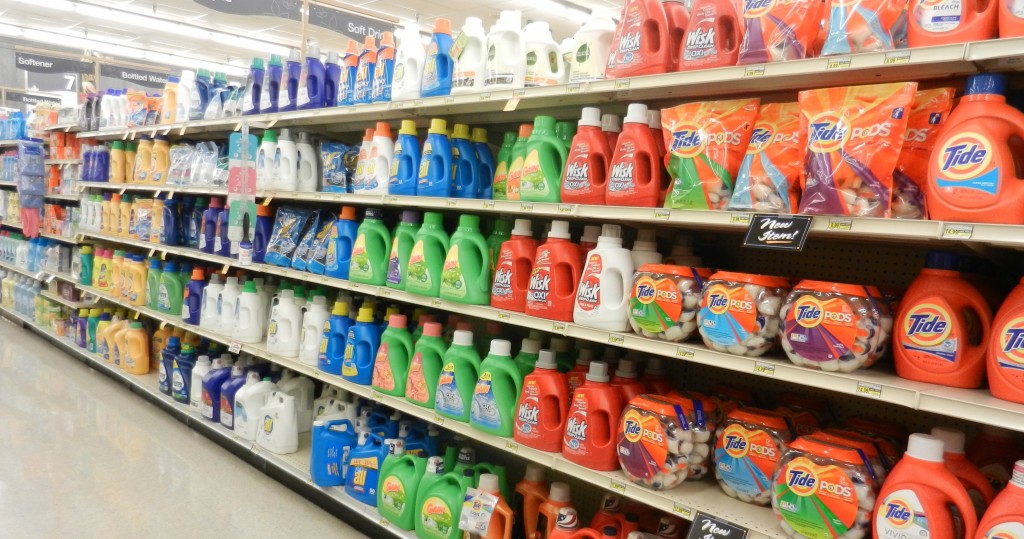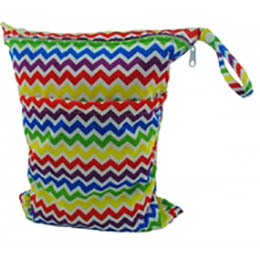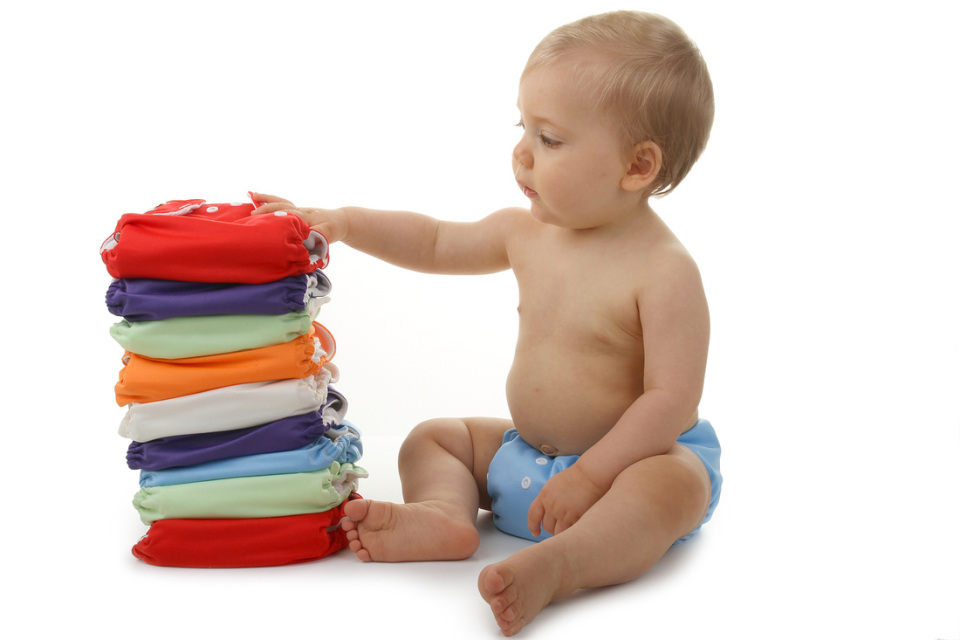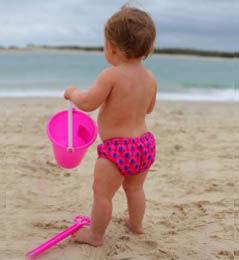Caring For Your MCNs
Your new BabyBots nappies and inserts will continue to increase in absorbency for the first 6 -10 washes. The absorbent inserts may seem a little big at first, but after the initial few washes, they will shrink to fit the nappies. It is important that your new inserts are completely immersed in cold (NOT hot) water for their washes. If you have a front loading washing machine that only uses a small amount of water, change the water level to high and add a towel or two to the machine to provide some weight. You will obtain far better washing results by doing this.
The easiest first steps are, therefore, to soak the nappies and inserts overnight in a bucket of water or in a laundry tub. Then cold wash and
Detailed Care Information
Washing
If soiled, simply empty the contents of the nappy into the toilet (or you can use a BabyBots 100% biodegradable flushable liner for this, if you don’t like the mess and, let’s face it, who does?)
BabyBots recommends the ‘DRY Bucket’ method to care for your
nappies. Placing soiled and wet nappy ‘shells’ and inserts in a dry nappy bucket, and placing the lid on, is a method of caring for nappies that
BabyBots recommends washing nappies and inserts daily, or every second day. If your baby is teething or taking any medication such as paracetamol, his or her urine can be very acidic, so we recommend rinsing your nappies and inserts in fresh water in your laundry tub, to dilute the urine concentration, before placing them into the DRY nappy bucket.


For best results, give the nappy ‘shells’ and inserts a cold machine wash using approximately HALF the recommended amount of washing liquid. Earth’s Choice is very reasonably priced, is eco-friendly, skin-friendly and fabric-friendly. Remember to use plenty of water in your machine. We recommend cold water, but never hotter than 40°C, as the heat will degrade the bamboo fabric and will cause the waterproof fabrics to delaminate, over time. DO NOT use soap based powders, such as Lux flakes, or any washing powders containing fillers, fabric softeners or oxygen bleach.
Hanging the nappy shells and inserts on the line is recommended as the sun acts as a natural
Strip Cleaning Information
Things to Remember:
PLEASE DO NOT USE bleach, Napisan, fabric softeners, whiteners, washing powder with enzymes, vinegar or laundry additives when washing the nappies. The use of these will damage the waterproof lining as well as decrease the absorbency of the bamboo fabric. In addition, the bamboo fabric has its own natural antibacterial properties that will help keep the nappy from going

Some detergents we recommend (without any financial gain for us) are Planet Ark, Enviro Clean, Eco Store and Earth’s Choice. If you wash other family member’s clothes in your machine with laundry detergents that do contain the additives, you may cause repelling problems in your
PLEASE DO NOT USE barrier creams with the nappies as these may cause a
About BabyBots Inserts
3-layer Microfibre Inserts
One free with every BabyBots MCN purchased
Extras available for purchase ($4.95 each)
Very absorbent
Quick drying
Holds approximately 300 mL
4-layer Bamboo Inserts
Outer two layers are made from bamboo fabric
Inner two layers are microfibre fabric
Extras available for purchase ($6.95 each)
Extremely absorbent
Drying time is just a little slower than for Microfibre Inserts
Holds approx. 350 mL
5-layer Charcoal Inserts
Outer two layers are made from a bamboo/charcoal mix fabric
Inner three layers are microfibre fabric
Extras available for purchase ($9.95 each)
Most absorbent – great for night time,
Drying time is just a little slower than for Bamboo Inserts
Holds approx. 500 mL (half a litre)
Caring For Your Accessories
Caring for BabyBots products and accessories is simple, convenient and inexpensive. Here are some helpful tips
BabyBots Nursing Pads
Rinse out daily (a quick rinse in the shower is good) and wash within 24hrs to reduce chances of
Cold to warm machine wash (up to 40 degrees) without using bleaches, softeners
Wash with a mild detergent and use no fabric softeners, as these can reduce absorbency.
Line dry, allowing the bamboo fabric and the natural
BabyBots Swim Nappies and Wet Bags
Thoroughly wash out chlorine ASAP with fresh water before storing or drying.
The wet bags, like the nappy shells, do best with a cold machine wash and line dry. Dry inside out and let the sun
Turn Wet Bags inside out for washing and drying.

Troubleshooting
Leaks:
When used correctly, BabyBots nappies should not leak. If you are experiencing leaking issues, please read the troubleshooting tips below to eliminate the possible causes:
Do not use barrier creams, lotions, or any product that contains oils. These items can cause a
Do not use fabric softeners when washing the nappies, as these may also prevent them from working correctly.
Ensure that you only use 1/3 to 1/2 of the recommended amount of washing liquid. Using more than this can also cause a water repellent build-up on the nappies.
Ensure that the nappy is done up snugly around your baby’s legs, so there is no gaping.
Make sure the absorbent insert is lying flat inside the nappy. It shouldn’t matter if the insert is close to the pocket opening of the nappy, as long as it is not hanging out of the opening.
If you have followed all the tips above and the nappies fit your baby snugly, check the inserts to see if they are soaked through or dry/partially dry when the nappy leaks:
If the inserts are soaked through and you need more absorbency in the nappy, add a bamboo or charcoal insert to the pocket.
If the inserts are dry or partially dry when the nappy leaks, you have a water repellent barrier in the suede cloth lining of your nappies, and there is a simple test for this – just
white bamboo suede lining, then press your hand onto the lining. The water should soak through quickly, and not pool on top. If the water doesn’t soak through, then your nappies will need a strip wash to remove the chemical build-up in the lining.
Smells:
The most important thing to remember, to keep the nappies smelling fresh, is to always ensure there is plenty of water in the machine when washing. This helps to remove most of the smells and is particularly important if your machine is a front loader. Those machines don’t use as much water for each load so, to increase the water level, add a couple of old towels to the load. Hanging the nappies on the line in full sun is another great way to keep them fresh.
If you find that the nappies do start to smell, it may be due to a
Some babies do go through stages where their urine will have a stronger smell than usual, and if this occurs, you may need to occasionally add a little antibacterial rinse to the final rinse of the wash, such as
This is our extremely easy and successful ‘Strip Wash‘ method:
Ensure your inserts are washed – you want to start with CLEAN inserts. If your inserts have any build up on the surface, scrub them with a toothbrush or nail brush with a small amount of dishwashing liquid and rinse off.
Put all your inserts into a tub of HOT water. We find a baby bath or big plastic tub works well. You can use the laundry tub if you have a good plug that doesn’t leak!
Add a generous squirt of dishwashing liquid or hair shampoo – the cheaper the better (this is a good opportunity to use up the horrible baby shampoo your great aunt gave you) and mix your nappies around in the water until a significant number of bubbles are formed. If you don’t get lots of bubbles you may need to add more detergent or shampoo. As the water will be hot, you may need to use a broom handle or wooden spoon for this.
Soak
Run a second rinse cycle at the end of your wash.
Dry as usual. You may find your inserts take much longer to dry than usual, due to the increase in absorbency. That’s a good thing!
Seven Simple Steps for Your MCNs
To help you get the best use out of your new modern cloth nappies, we have summarised the following tips:
- Front loading machines tend to be a little rougher on nappies than top loading machines, so you may need to wash the nappies on a ‘gentle’ cycle. Make sure the nappies are immersed in water when you wash them, by setting the water level to high and including a towel or two in the wash.
- Cold washing is best, rather than hot, as some machines use water that is extremely hot, which can speed up the wear on your nappies and inserts.
- Many washing powders contain high levels of non-soluble particles (fillers), which can increase wear on the nappies, particularly in a front loading machine. Try using a laundry liquid instead, the cheaper the better.
- Try to bring the nappies in from the line as soon as they are dry. Leaving the nappies in full sun for days at a time may also speed up the wear on them.
- Try to never use a tumble dryer.
- Wash the nappies regularly – daily is best or every 2 days. Leaving them sitting in the bucket for longer than this may reduce the life of the nappies, and it’s not a good idea to leave them wet for long periods either, as this encourages the growth of
bacteria . If your baby is teething, rinse the inserts & nappies in cold water, to dilute their strong urine, before putting in the nappy bucket. - Do not use any of the following when washing your nappies: bleach, fabric softeners, Napisan, washing powders with enzymes,
soap based powders (e.g. Lux), tea tree oil, eucalyptus oil, vinegar, baking powder or whiteners.



